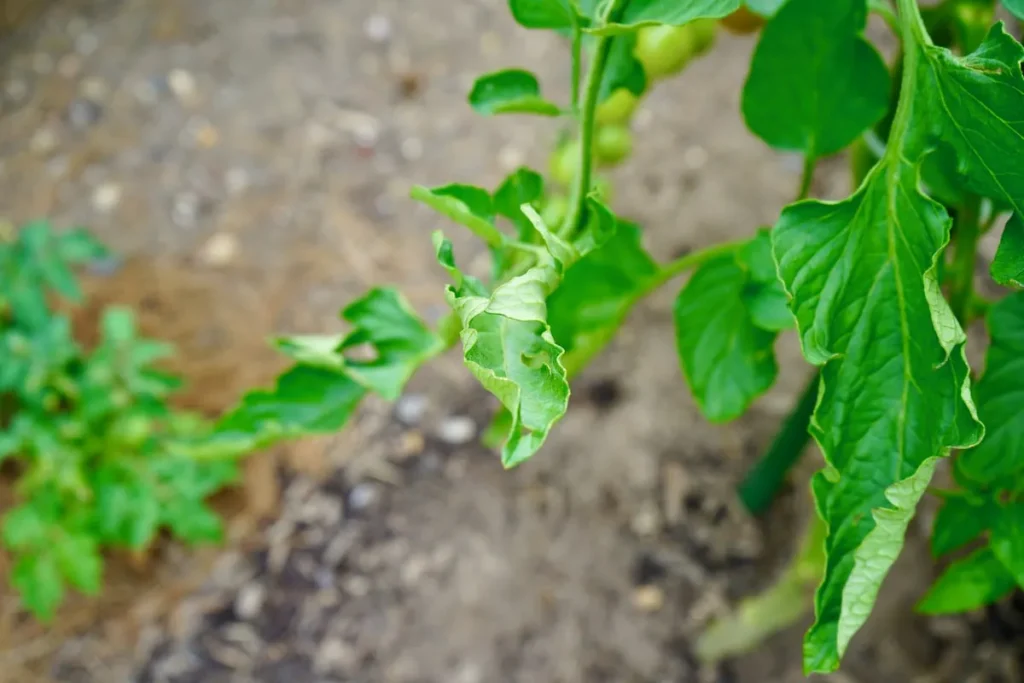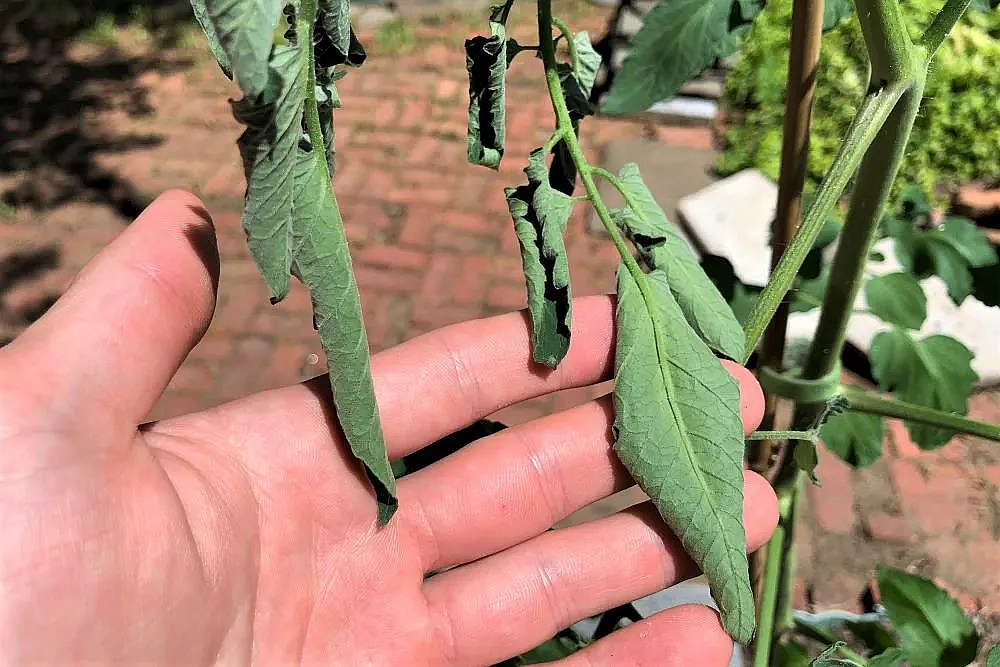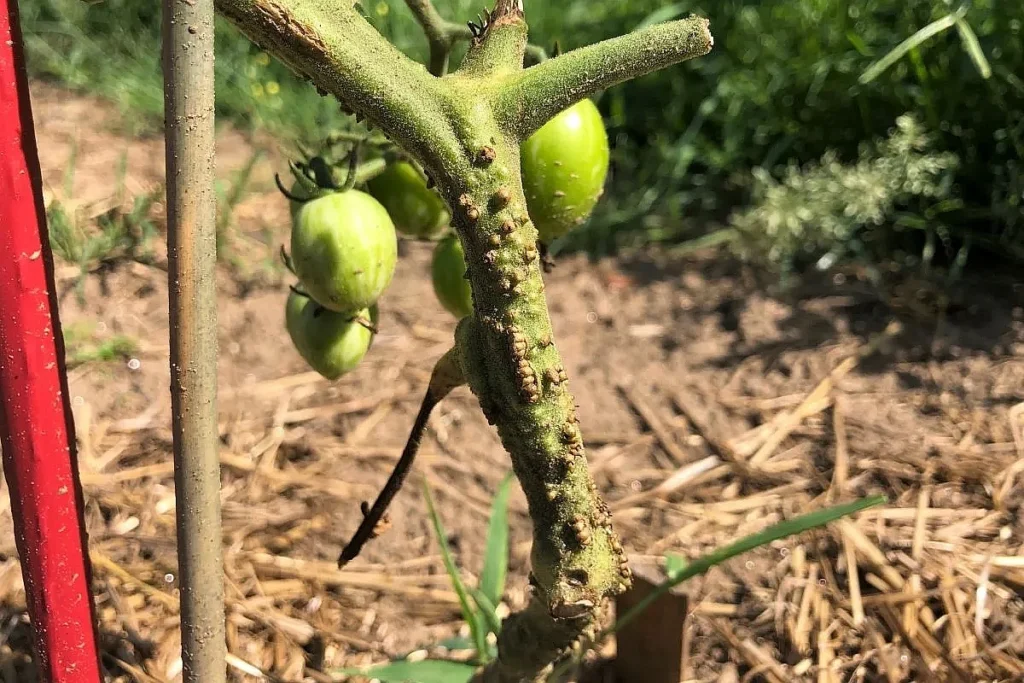Key Takeaways
– 🍅 Over-watering tomatoes can lead to negative effects such as root rot and the spread of fungal spores and pathogens.
– 🍅 Signs of an over-watered tomato plant include drooping leaves, yellowing leaves (chlorosis), adventitious roots on stems, root rot, disease susceptibility, dying leaves, and curling or deformed leaves.
– 🍅 Proper water management is crucial for tomato plants, aiming for moist soil with good drainage.
– 🍅 Excessive watering can contribute to nutrient deficiencies, diseases, and the spread of pathogenic spores.
– 🍅 Adjusting watering schedules and removing dead or dying parts of the plants can help revive over-watered tomato plants.
– 🍅 Curling leaves can be caused by over-watering or excessive heat.
– 🍅 Tomato Answers provides resources on various tomato-related topics, including growing techniques, pests, tomato varieties, and tomato history.
Signs Of An Over-Watered Tomato Plant | How To Fix
Overwatering tomatoes can kill plants. Too much water leads to root rot and spreads fungal spores.
In this article, I will share 7 signs that you are over-watering your tomato plants. However, first let’s discuss just how much water you should be giving your tomatoes.
How Often Should You Water Tomatoes?
Tomatoes like evenly moist, well-drained soil. The soil should never stay soaked long. This suffocates roots by pushing out air. To water right, keep soil moist but ensure drainage all season.
1. Drooping Leaves
Wilting leaves can be a sign of both over-watering and thirst in tomato plants, leading to confusion.
To determine if your tomato plant needs water, check the soil moisture content. Dig around the base of the plant about 2-3 inches deep. If the soil is dry, then the issue is lack of water. If the soil is moist, wait until it dries out before watering.
Drooping tomato leaves indicate a problem, but it’s important to investigate further before assuming it’s due to over-watering.
2. Chlorosis (Yellowing Leaves)
Another symptom to be aware of is discolored leaves, particularly yellowing or chlorosis. While yellow leaves can indicate various issues, over-watering can certainly contribute to this problem.
Before jumping to conclusions, it is important to consider a few other potential causes if you notice yellowing leaves on your tomato plant.
- If you are growing tomatoes in containers, your plants may require nitrogen as they could be experiencing nutrient deficiency.
- Plant leaves naturally die as they age. As they become less efficient, the plant decides they are no longer necessary and they will turn yellow and drop off. This is a normal process and there is no cause for concern.
- If you notice yellowing spots or spreading, it could indicate the presence of disease.
If the aforementioned causes can be eliminated as possibilities, yellow leaves may be a result of excessive watering. When roots are deprived of oxygen, certain areas of the plant may turn yellow and wither.
3. Adventitious Roots On Stems
Tomatoes have the ability to grow roots along any part of their stems, allowing them to re-root when they come in contact with soil. This makes cloning tomato plants extremely simple.
If you observe roots along the stem of your tomatoes, it could indicate overwatering. Moisture can cause tomatoes to develop these extra roots.
The presence of excessive humidity or over-watering could potentially lead to the formation of these roots. In environments with high humidity, moisture in the air can contribute to this phenomenon.
If the soil is excessively moist, roots are likely to develop near the soil. It is recommended to consider bottom pruning to improve airflow and to consider reducing watering.
4. Root Rot
Root rot is a symptom of over-watering in tomato plants. When the roots are constantly submerged in water, they are unable to get enough oxygen, leading to rotting.
Root rot is a significant concern that can ultimately result in the death of a plant.
Root rot can be caused by over-watering as well as diseases like phytophthora root rot. However, proper water management is the most effective way to prevent root rot diseases.
Tomatoes can be saved from root rot by re-rooting the plants along the main stem, which provides a new connection to the soil and is a way of propagating.
5. Disease
Disease is a common challenge when growing tomatoes, so we take various precautions to prevent it, such as planting resistant varieties and practicing bottom pruning.
If your plants are diseased, there are various potential causes. However, excessive watering of tomatoes can certainly be a contributing factor.
Fungal and bacterial infections that affect tomatoes thrive in humid and wet environments. Consequently, excessive watering increases the likelihood of pathogenic spores infecting your plants.
Additionally, water is a common medium for spore replication and spreading between plants. Therefore, if your plant leaves are frequently wet or if you touch your plants after watering them, it is possible that you could be unintentionally spreading disease.
6. Dying Leaves
If a tomato plant is showing signs of decline, it is possible to revive it by making adjustments to its watering schedule and providing proper care.
If the tomato plants have reached this stage, there may already be some damage. It is advisable to remove any dead or dying parts of the plants to promote new and healthy growth.
Some leaves will naturally die as they age. This process typically begins at the lower part of the plant where the oldest leaves are located.
7. Curling Leaves

Lastly, curling or deformed leaves may indicate over-watering in tomato plants. Excessive water in the soil can cause leaf deformation and abnormal stem bending.
Another common reason for curled leaves is excessive heat. Tomato plants naturally curl their leaves as a protective measure against high temperatures. If the weather has been hot in your area, this is likely the cause.
How to Fix Over-Watered Tomato Plant Issues
Signs You’re Overwatering Your Plant, And How To Fix It (Video)
Are You Overwatering Your Plants? | 9 Telltale Signs
FAQs About Over-Watering Of Tomato Plants
How Does Over-Watering Affect Tomato Plants?
Over-watering can lead to root rot, fungal spore proliferation, and other pathogen spread, which might eventually kill the plant.
What Are The Initial Signs Of Over-Watering?
Wilting or drooping leaves can be an early sign, however, it could also indicate under-watering, hence checking soil moisture is essential.
How Can Yellowing Leaves Indicate Over-Watering?
Yellow leaves may result from over-watering, as drowned roots cannot access oxygen, causing parts of the plant to yellow and die back.
Why Do Adventitious Roots Form On Over-Watered Tomato Stems?
Over-watering triggers tomato plants to sprout adventitious roots along the stems, as excessive moisture stimulates root formation.
How Does Over-Watering Cause Root Rot?
Over-watered plants have roots sitting in water, which lacks oxygen, leading to root rot – a serious issue potentially killing the plant.
Can Over-Watering Contribute To Tomato Plant Diseases?
Yes, over-watering creates a favorable environment for fungal and bacterial infections, as many pathogens thrive in wet, humid conditions.
How Does Over-Watering Lead To Dying Leaves?
Consistent over-watering can cause leaf death, and while some recovery is possible, damage done may be irreversible.
Why Do Leaves Curl On Over-Watered Tomato Plants?
Excessive soil moisture from over-watering can lead to leaf deformation and curling, although heat stress is a more common cause.
How Should Tomato Plants Be Watered To Avoid Over-Watering?
Tomato plants prefer evenly moist, well-draining soil; avoid soaking the soil for extended periods and ensure good drainage throughout the season.
How Can One Revive An Over-Watered Tomato Plant?
Adjusting watering practices, removing dead or dying portions, and possibly re-rooting the plant can help revive an over-watered tomato plant.
What Does Overwatered Tomato Look Like?
Overwatered tomatoes exhibit wilting, yellow or brown leaves, and may have swollen, waterlogged stems.
Will Tomato Leaves Curl If Overwatered?
Yes, leaf curling can occur, though it’s often more associated with heat stress.
Does Overwatering Tomatoes Cause Yellow Leaves?
Indeed, yellowing leaves are a common sign of over-watering.
Why Are My Tomato Plants Drooping After Watering?
Excessive water can suffocate roots, causing drooping or wilting.
How Do You Fix Overwatered Tomato Plants?
Adjust watering, ensure good drainage, and remove damaged foliage.
What Is Tomato Plant Overwatered Vs Underwatered?
Overwatered plants have yellow, limp leaves; underwatered have dry, brittle foliage.
How To Treat Over Watered Tomato Plants?
Adjust watering practices, improve soil drainage, and trim away damaged areas.
Will Overwatered Tomato Plants Recover?
With corrected watering and proper care, recovery is possible.
How To Fix Overwatering Tomatoes In Pots?
Ensure pots have drainage holes, adjust watering, and consider repotting with well-draining soil.
How To Fix Overwatered Tomato Seedlings?
Reduce watering, improve drainage, and ensure a well-ventilated growing environment.
Are You New To Tomato Answers?
If you are new to Tomato Answers, then here are a few resources that will help you:
- Navigate the exciting world of tomatoes with us at Tomato Answers, your go-to resource for all things tomato related.
- Learn about the fascinating and sometimes pesky creatures that find your tomatoes just as delightful as you do in our post, Tomato Bugs.
- Discover the secret ingredient that could take your tomato growing game to the next level with our post on Epsom Salt and Tomato Plants.
- Explore the captivating intersection of the reptile and plant worlds as we delve into the question, Can Bearded Dragons Eat Tomatoes?
- Get a closer look at a specific technique to help your tomato plants flourish in our piece about why and how to Pinch Off Tomato Plant Flowers.
- Meet the star of the tomato world, as we put the spotlight on the versatile and beloved Celebrity Tomato.
- Are your tomatoes growing too slow? Unearth the secret to Speed Up Tomato Growth with our in-depth guide.





